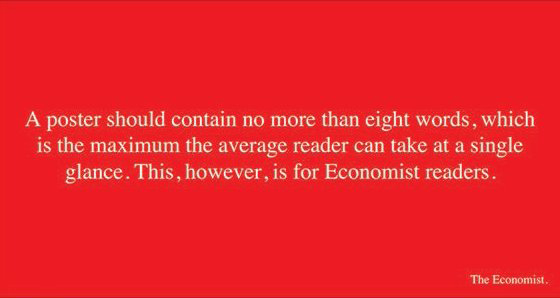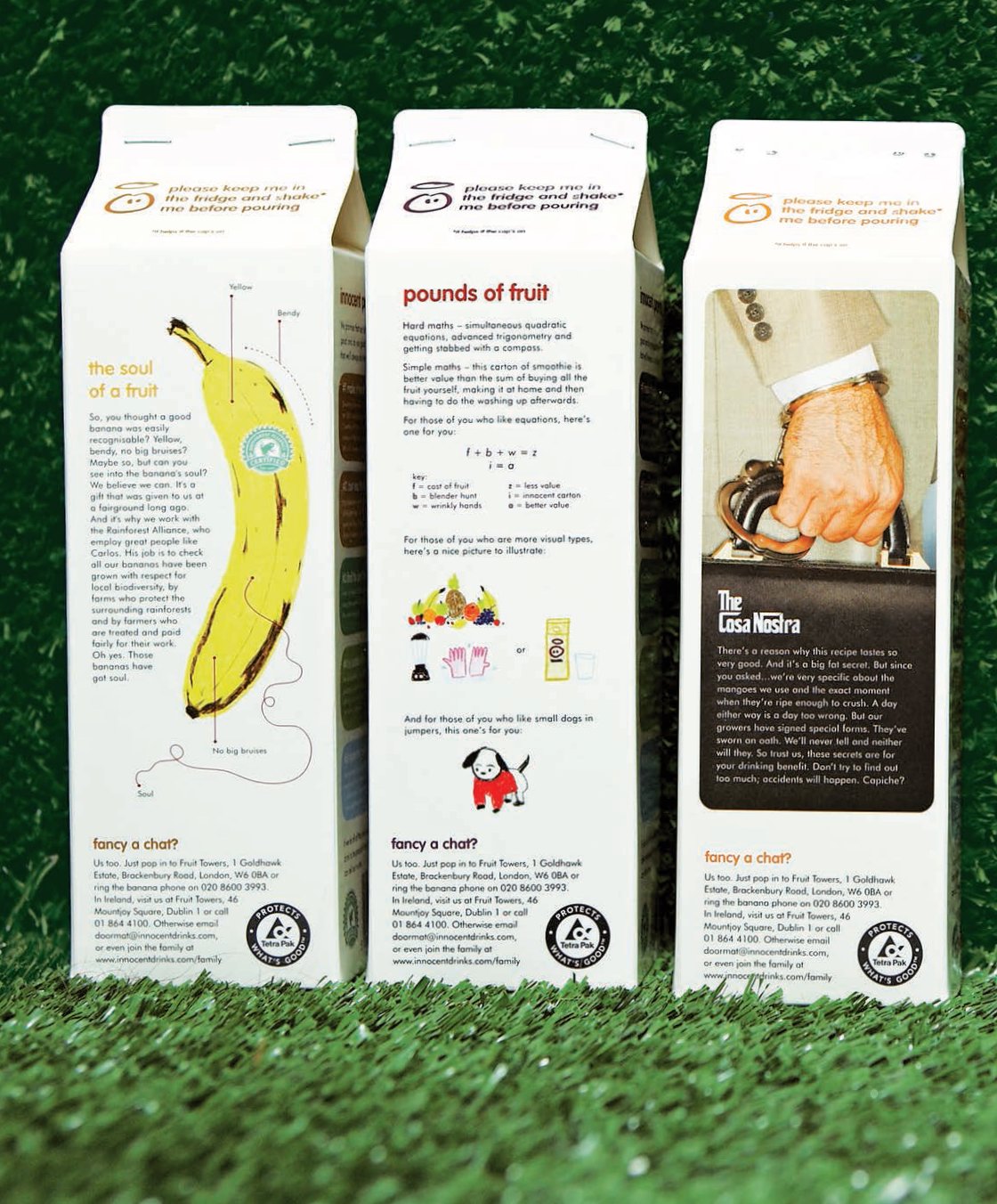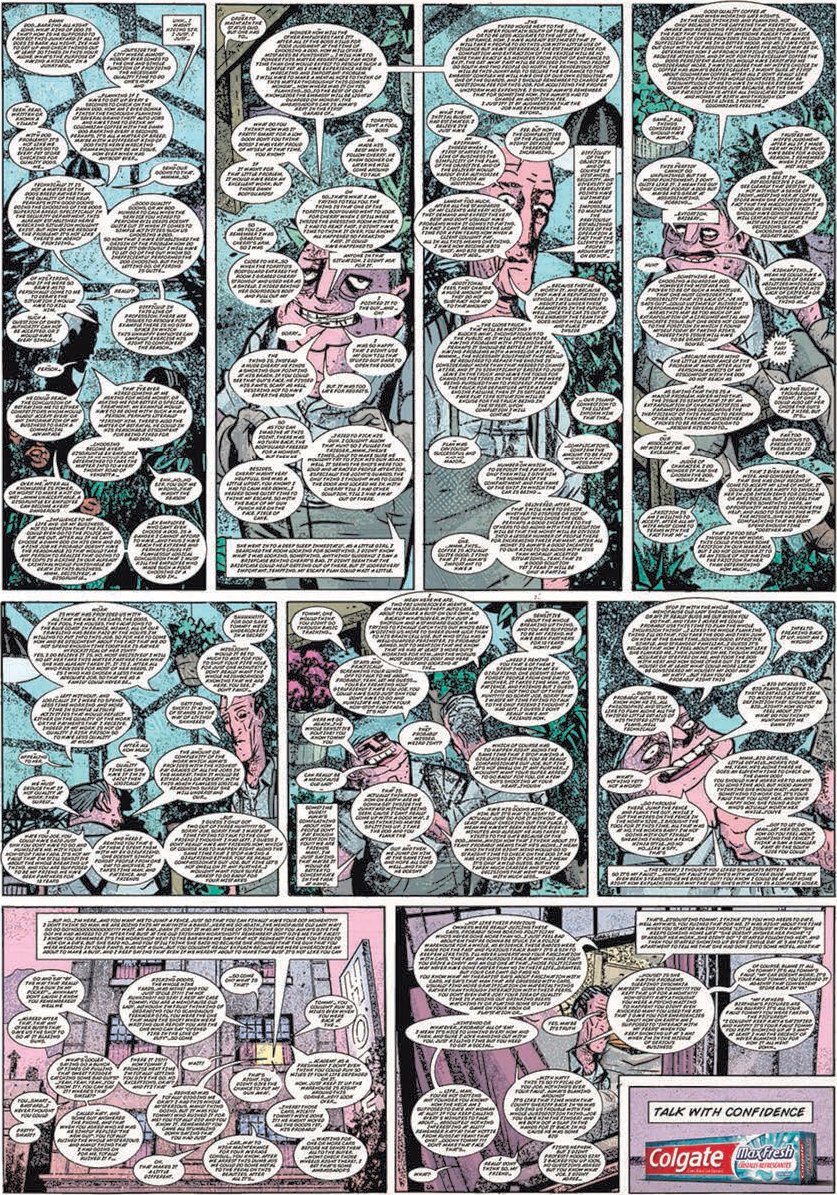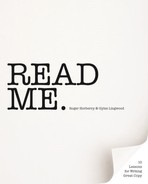The Big Picture
Our kind of copywriting

Writing matters, but then we would say that, wouldn’t we?
In this lesson we describe our take on writing today, we define the writer’s job, and we suggest a manifesto for our kind of copywriting. It’s the foundation on which the rest of this book is built, so read this first and what follows will make more sense.
It’s sometimes said the world is “post words.” If that’s true then copywriting belongs in the past, along with other quaint relics of yesteryear, like quilt making, folk dancing, or marrying one’s close cousins.
“Post words” is an intriguing idea spoiled only by the inconvenient fact that it’s complete and utter rubbish. It suggests people no longer read or respect the written word, which clearly isn’t the case. As proof, consider J. K. Rowling’s bulging bank balance, Amazon’s stratospheric Kindle sales, the army of local people fighting to keep neighborhood libraries open, and the social media-enabled multitude whose words have, on occasion, helped changed the world.
Yes, attention spans are shorter and yes, there are shiny new forms of media competing for our attention, but let’s not get carried away. People still read, they just do it in more and different ways. With apologies to Mark Twain, rumours of writing’s death are greatly exaggerated.
“Ah,” say the naysayers, “surely you know we live in a visual culture where a picture is worth a thousand words?” And that’s fine, but some problems don’t lend themselves to pictorial solutions. Find us an image that absolutely and unambiguously says, “Just do it,” or “Buy it. Sell it. Love it.,” or “Solutions for a small planet,” or “Because I’m worth it,” or “Impossible is nothing,” or… well, you get the idea.1 We’re certainly not suggesting words have any priority over images; our point is both have their place. A picture may well be worth a thousand words, but just try making that very point with a picture alone.

Elegant, intelligent ads for UK bookseller Waterstones that celebrate reading and the power of the written word.

One of many brilliant text-only ads for The Economist. The self-referential subject of this example is an added bonus.

This message from Olympus is about adventure and attitude, a combination almost impossible to convey using imagery alone. Why else do you think they wrote all those words?


Check out the nouns—“a drizzle of olive oil,” “a scatter of wild bay leaves.” Packaging is home to some of the best copywriting around.
…but they don’t read copy, do they? Again we must disagree. People will read what copywriters produce for precisely as long as it interests them, informs them, or suggests a benefit. As proof, look around at the acres of excellent copy being produced for design, brands, digital, packaging, and marketing in general. Someone must be reading and reacting to all those words or no sane organization would commission and pay for them. Despite what the skeptics may tell you, firstclass copy is being produced and consumed with as much enthusiasm as ever.
OK, OK, so people read, and perhaps they even read copy…
…but not long copy surely? For long copy—which we’ll define as anything over around 100 words— is, by common consent, long dead. And it’s true; ads featuring hundreds of carefully crafted words are no more. During the 1990s the long-copy ad somehow ceased to be, and the occasional examples we see today tend to be pastiches of past forms.
But here’s the thing: Who says long copy has to go on ads? The marketing mix is broad—long copy is alive and well and living on websites, brochures, packaging, and so on. It’s not clear how this rather obvious truth has escaped general detection. In fact we reject the whole long-copy/short-copy debate as largely irrelevant; in the end all that matters is the effect a piece of communication produces, not the number of characters it contains. All of which leads us nicely into our next point—the sort of copywriting we’re talking about and the sort of writer we’ve written this book for.

Ever found yourself absentmindedly consuming the words on the back of a cereal box as you absentmindedly consume its contents? Same idea here.

It’s a long-copy ad all right, but the words aren’t there to be read.

Ironically the one place where copy really has fallen out of favor is advertising, the industry that invented copywriting in the first place.
Why so? Partly it’s about skills. It’s been suggested that many of today’s ad copywriters “will never write what we’ve known as a headline outside of an advertising class,” while according to a 2010 study by the UK firm, Think Eye Tracking, a competition-winning long-copy ad from 2010 scored lower for eye tracking, engagement, and recall than a similar piece from 1999, leading the study’s authors to ask, “Have agencies forgotten how to do long copy?”
Partly it’s about client pressure. Veteran UK copywriter Neil French comments, “How many times have you been in a client meeting, and he’s announced ‘People don’t read copy any more’. This coming from a man with a newspaper poking out of his briefcase. And if you point this out, he says, ‘Well, I do, of course. But the public doesn’t.’”
Partly it’s because international campaigns demand international solutions. According to Mr. Bean creator Richard Curtis, one of the reasons the movies succeed everywhere on earth is their lack of language. When Mr. Bean needs a new pair of underpants he doesn’t head to a store with a sign saying “Haberdashers,” he heads to a store with a giant pair of Y-fronts hanging outside. We get it, whatever language we speak.
But mainly it seems to be a combination of changing creative trends and the advent of new technologies. Copy, when it features in the mix, doesn’t mean headlines and body text. Instead it’s woven into visuals, products, apps, and experiences that play out across multiple platforms and in multiple locations. As a result, today’s advertising copywriters tend to produce relatively few actual words. Funny old world, isn’t it?

John Simmons
You make your own way. It might not be a fast or a dynamic way but you’ll get somewhere eventually. That’s OK. All I can say is take what life throws at you. You’ll learn from it and you’ll use it. Never get bitter, don’t give in to disappointment. You’ll find that every experience is a step along the way to being a writer—as long as that’s the path you’ve decided to head along. You might find it’s a meandering path, and there probably are shortcuts if you’re lucky. What matters is to commit yourself to going down that path, and to carry on even when it seems to be leading nowhere. I never found the shortcuts, but I think you enjoy the journey in the end.
John was formerly Director of Verbal Identity at Interbrand in London, and is now an independent writer. John writes for companies and brands in the UK and overseas, and runs highly regarded workshops with www.dark-angels.org.uk. His many books include We, Me, Them & It, Dark Angels, The Invisible Grail, and 26 Ways of Looking at a Blackberry. John also co-edited The Economist Guide to Brands and Branding, wrote a regular column about brands in The Observer, and is co-author of Room 121. As he might say, blimey!

Words aren’t fussy, they’ll work wherever you put them, from websites (top) and business cards (above) to storefronts (opposite). “Everything is media,” according to TBWA bigwig Lee Clow. You can see his point.

Allow us to propose a new profession—brandwriting—and a new professional, the brandwriter.
You won’t be surprised to hear a brandwriter is a copywriter who creates words for brands. Those words can appear pretty much anywhere a brand wishes to communicate. Packaging copy for breakfast cereal? Brandwriting. Web text for an online store? Same again. Brochure for a charity? Script for a corporate video? Flyer for a launch event? Presentation for senior managers? Program for a music festival? All 100 percent brandwriting.
What brandwriting doesn’t mean is advertising, at least not the variety practiced by mainstream agencies. As we’ve mentioned, the advertising copywriter’s remit has expanded to the point where words are just one weapon in their arsenal. This move to the visual/conceptual is exciting stuff (indeed it’s been called “the new creative revolution”) but our concern here is with words, primarily for print and screen. We don’t discuss the very particular skills needed to write for TV, radio, outdoor, and so on (although some of our contributors have wise words to say on these subjects), we’re not concerned with experiences or environments, nor do we talk about ad agency-specific activities like strategy or planning. If that’s wrong, we don’t want to be right.
Perhaps the biggest difference between advertising copywriters and brandwriters is the volume of words they produce. Many contemporary ads are about bringing a single killer concept to life in as few words as possible. In contrast, brandwriting is very much about words and the articulation of complex ideas in the most engaging, persuasive way possible. Although related, these two approaches are very different.
Having said all that, a quick flick ahead will show you we’ve used the term “copywriter” instead of “brandwriter” throughout this book. That’s because the world calls what we do “copywriting,” so it makes sense to play along, even if the label isn’t quite right. Just bear in mind that writing for brands in all their many and varied forms is what Read Me is about, and if you choose to call what you do “brandwriting,” that’s fine by us.

This Red Brick Beer packaging by advertising agency 22squared is proof—if it were needed —that long copy is alive and well. It doesn’t just live in ad land anymore.

A great take on manifestos from New York copywriter and creative director Kim Mok.
One more thing before we begin
A number of themes come up again and again in this book; they add up to what we must self-consciously call our “manifesto.” So allow us to introduce a series of truths we hold to be self-evident.
We believe…
…Craft is key
Copywriting is a career for doers not talkers. Being a doer means developing your hands-on writing skills; it’s essential you can sit down, tune in, and turn out appealing, effective text ranging from a three-word slogan to a three-thousand-word article at absurdly short notice. Amid all the noise and nonsense of modern life it’s good to have something as solid as a craft skill to fall back on. Getting your hands dirty doing stuff in this way is ever so slightly noble. OK, it’s not the same as being a fire fighter in the heroic occupation stakes, but the ability to create something out of nothing can be profoundly satisfying, and is one of the principal rewards of the job.
…Words are ideas (and vice versa)
All copywriters are in the ideas business—that’s because words are ideas in another form. The process of identifying and improving promising ideas is the starting point for the whole writing process. The act of getting something down on paper or screen forces the copywriter to explore the limits of an idea, test its integrity, and fix any problems they find. It’s about getting the thinking right. We can’t overemphasize the importance of this process—if a piece of copy isn’t conceptually robust, then the chances are it won’t work because readers will sense its shortcomings and respond accordingly. Get the thinking right and whatever follows has at least a fighting chance of success.
…Copy is conversation (and vice versa)
Good copywriting tends to read like one person talking to another. This conversational approach has become even more important with the rise of digital. In the analog past, copywriting was a one-way street— copywriters sweated over high-impact headlines and beautifully wrought body copy that delivered a nicely packaged message to readers, with little or no opportunity for them to respond (beyond making a purchase, if it was that sort of job). The arrival of social media means this monologue has been at least partly replaced by dialogue, as individuals and brands exchange thoughts on everything from new business ideas to corporate social responsibility. As a result, copywriters working for these brands need to know how to open and sustain a conversation in writing2.

Dialogue-based copy for the anti-slavery website slaveryfootprint.org. The relaxed, conversational tone makes the subject matter all the more shocking.

The copy here tells a quirky story about the product, but what it’s really doing is building the brand’s personality. The gag about corners is priceless.
…It all comes back to brands
Almost all copywriters, regardless of their particular employer or industry niche, are concerned with brands. They might express this concern in different ways, but underneath the sector-specific jargon is a near-universal interest in helping their client’s brand grow and prosper. That’s why we’ve included a lesson on the B word later in this book—building and sustaining brands is the engine behind much of what we do, so it pays to have a solid understanding of how brands work. For now just be aware that, in the end, 99 percent of copywriting is somehow in the service of brands.3

Wordy ads for word lovers. How appropriate for a publisher like Penguin.
…Persuasion and engagement
In her book The Idea Writers, Teressa Iezzi argues:
Now the copywriter’s job is to create stuff that people love and engage with and respond to and even become disciples of. That’s what’s changed— and it’s a good thing […] advertising was all about persuasion. Now it’s all about engagement.
That may be true for advertising copywriters, but is it true for their branding brethren? Surely we need a bit of both—persuasion without engagement is cold and grudging; engagement without persuasion is fruitless and ultimately unrewarding. The first step in persuading someone is to engage them. So a recurring theme in this book is “Don’t be boring” a phrase borrowed from David Abbott, one of the UK’s best ever advertising copywriters.

“Nobody reads ads.”
As the quotation marks indicate, I didn’t write that headline.
Step forward Mr. Howard Luck Gossage, variously described as “the Socrates of San Francisco,” “America’s most influential advertising genius,” and “the Velvet Underground to Ogilvy’s Beatles.”
Encouragingly, what Gossage went on to say was “People read what interests them. Sometimes, it’s an ad.” Phew—so the copywriter’s efforts are not in vain after all…sometimes.
Copywriting differs from most other forms of professional writing— journalism, for example—in that, sadly, the only people likely to be on the edge of their seats, agog with anticipation at the prospect of your latest pronouncement, are your mom and the client. If journalism is ephemeral, copywriting must be little more than antimatter.
My first piece of advice, then, is to remember the default position: Right now, no one out there is the slightest bit bothered about your client’s product or your ad.
Second, this leads to a pretty obvious sequitur: Keep it interesting. Is what you’ve written motivating? Would it really interest people? Really? Read your copy out loud and see how it sounds. Be honest with yourself; and if that doesn’t work, ask your spouse, partner, housemate, and/or drinking buddy for their opinion.
Third, get to know not just the product, but also your target audience. They may be very different from you—in age, sex, politics, religion, assumptions, priorities. Never assume everyone thinks the same way you do.
Fourth: The brief is your friend (assuming it’s a decent brief). Refer back to it constantly. It’s all too easy to get blocked in a creative cul-de-sac unless you take the time to think your argument through first.
That brings us to our fifth point. Clarity before cleverness. Whether you’re striving for the perfect headline, tagline, piece of dialogue, or caption, if you can’t think of a form of words you feel is brilliant enough, don’t sit there fuming. Just start writing. Even if you will never use long copy in your campaign, write an essay about the product. Concentrate on being clear and persuasive rather than clever. If you’re a real writer, you will find the cleverness starts to creep in without you even noticing.
Next: In the search for clear, effective communication, be prepared to chuck out redundant phrases, sentences, even whole paragraphs you have carved to perfection and now love. It’s a cruel old world.
My final point is, give the writing a rest every so often. Just save what you’ve written and go for a walk, see a movie, visit your local purveyor of Flat White. Think about something else for a while, then come back to it. Read what you’ve written. And then—with a bit of luck—you won’t be the only person who does.
Chris is senior lecturer and course leader on the highly regarded Creative Advertising MA course at University College Falmouth in the UK. He arrived there after 30 years as a copywriter and then creative director for a succession of top London advertising agencies (including Saatchi & Saatchi, Leagas Delaney, Publicis, and Grey) where he cocreated award-winning campaigns for clients ranging from breweries to building societies. Chris’s research interests in recent years have concentrated heavily on the effects of the digital media revolution on the advertising business.

A great campaign for cheap and cheerful electrical retailer Dixons’ online offer, which plays on the universal desire for a bargain.
…Learn from everything, steal from anywhere
We’re not saying lift the work of others wholesale— that’s called plagiarism and it’s wrong in a very real legal sense; we’re saying grab what inspires you and make it your own. Because in the end we can’t really do anything else—our consciousness is a product of our experience, a kaleidoscope of everything we’ve ever been exposed to. The trick is to absorb what appeals, then twist it to suit your purposes (actually that’s two tricks but you get the point). In the end you’re only as good as the stuff you surround yourself with, so seek out the widest possible range of inputs, soak up the genius of others like a quilted paper towel, and don’t worry too much about originality. Nothing comes out of nothing; there’s a precursor to everything, and when people say “How original!,” what they really mean is they don’t recognize its sources.
…Persistence pays
If working with words was easy, lots of people would be doing it. But it’s not, it’s hard—hard to land your first job (and your second, and your third…), hard to learn everything you need to succeed (although this book is here to help), and hard to stay fresh (without which you’ll turn into a drudge). However you look at it, building a career as a copywriter requires an industrial-sized dose of persistence. Here’s Benjamin Franklin, one of the Founding Fathers, on the merits of terrier-like tenacity:
Energy and persistence conquer all things.
Over a century later another politician—Calvin Coolidge—made much the same point:
Press on. Nothing in the world can take the place of Persistence. Talent will not; nothing is more common than unsuccessful men with talent. Genius will not; unrewarded genius is almost a proverb. Education will not; the world is full of educated derelicts. Persistence and determination alone are omnipotent. The slogan “Press On” has solved and always will solve the problems of the human race.
And on that empowering note let’s take Coolidge’s advice and, well, press on.
Now you have a go
Perhaps it’s a bit early to ask you to put what you’ve learned into practice, but if you’re up for it, here are a couple of exercises to try. Do give them a go—copywriting is something you learn by doing, and you want your money’s worth from this book, don’t you?
As with all the workouts included in the book, when you’ve finished, ask yourself, “What stood out as I was working through? What have I learned? How can I apply it to my own writing?” Make notes, and refer to them often. That way you’ll really get the benefit.
Workout One
Brand copywriters need to be confident working with texts that are measured in paragraphs and pages rather than syllables and sentences, so to sharpen your skills we want you to write us a long-copy piece on “Why everyone should commit an imprisonable offense some time in their lives.” Call it an article, a rant, an essay, an ad, a propaganda piece—we don’t mind. All that matters is that you make your writing so fabulously irresistible that the reader can’t help wishing it were longer. That’s your goal—leave ’em wanting more.4 Somewhere between 100 and 300 words should do it.
Workout Two
Same again, only this time write us a compelling piece on “The case for cheating on your partner.”
1. Taglines for Nike, eBay, IBM, L’Oréal, and Adidas, in case you were wondering.
2. It also means readers are far less passive than in the past. In fact you could say readers aren’t really readers any more; in the digital world they’re often active contributors to the debate—“the people formerly known as ‘the audience’”—as US cultural critic Clay Shirky describes them in his book, Cognitive Surplus.
3. Possible exceptions include public information campaigns, government work, and certain types of charity writing. In these situations communicating information tends to take precedence over brand building.
4. Often described as “The first rule of showbiz.”
